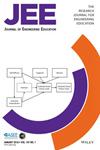Students' technological ambivalence toward online proctoring and the need for responsible use of educational technologies
Abstract
Background
COVID-19 has led to an unprecedented increase in the use of technology for teaching and learning in higher education institutions (HEIs), including in engineering, computing, and technology programs. Given the urgency of the situation, technologies were often implemented with a short-term rather than long-term view.
Purpose
In this study, we investigate students' perceptions of the use of video-based monitoring (VbM) for proctoring exams to better assess its impact on students. We leverage technological ambivalence as a framing lens to analyze students' experiences and perceptions of using VbM and draw implications for responsible use of educational technology.
Method
Qualitative data were collected from students using focus group interviews and discussion board assignments and analyzed inductively to understand students' experiences.
Findings
We present a framework of how a technological shift of existing practice triggered ambivalence that manifested itself as a sustained negative outlook among students regarding the use of VbM, as well as their institution and instructors. Students accepted the inevitability of the technology but were unconvinced that the benefits of VbM outweighed its risks.
Conclusions
As instructors use educational technologies that are inherently driven by user data and algorithms that are not transparent, it is imperative that they are attentive to the responsible use of technology. To educate future engineers who are ethically and morally responsible, engineering educators and engineering institutions need to exhibit that behavior in their own practices, starting with their use of educational technologies.


 求助内容:
求助内容: 应助结果提醒方式:
应助结果提醒方式:


